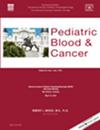Children with end-stage solid tumors would benefit from established nonsurgical options for palliative site-directed local control with the intent of improving quality of life (QOL) and extending survival. We investigated the practice and tolerability of palliative ablation strategies in patients with pediatric solid tumors.
Children and young adults with solid tumors ineligible for surgical site-directed control were treated with palliative ablative strategies between 2010 and 2020 at five institutions participating in the Pediatric Surgical Oncology Research Collaborative. Demographic, histologic, and clinical data were retrospectively evaluated, and assessment of patient reasons for choosing ablative strategies was qualitatively assessed.
A total of 69 patients underwent 89 ablative procedures for 132 lesions. More than 10 histologies were represented, the most common of which were Ewing sarcoma (n = 15 patients), osteosarcoma (n = 13 patients), and rhabdomyosarcoma (n = 9 patients). Ablation techniques included cryoablation (n = 9 procedures/16 lesions), radiofrequency ablation (RFA) (n = 4 procedures/5 lesions), microwave ablation (MWA) (n = 5 procedures/12 lesions), and stereotactic body radiotherapy (SBRT) (n = 68 procedures/99 lesions). Grade 3 or higher adverse events (AEs) included pain requiring IV medication in cryoablation (three out of 12 procedures), RFA (one out of four procedures), and MWA (two out of five procedures), bleeding in MWA (two out of five procedures), and skin burns requiring surgical intervention in SBRT (one out of 68 procedures). Patients were generally hospitalized after percutaneous ablation (19 out of 21 cryoablation, RFA, and MWA procedures) but the hospital stay was short (mean/SD 1 ± 4 days). Only four patients who were already hospitalized experienced hospitalization extension due to undergoing an ablative procedure. The primary reason for pursuing ablative measures could be broadly categorized into four groups: treatment of unresectable disease either due to surgical inaccessibility or metastasis (n = 31), symptom relief, either pain or mass effect (n = 25), specific patient QOL concerns unrelated to pain or life prolongation (n = 5), and physiologic instability for otherwise resectable disease (n = 4). All patients undergoing treatment for symptom relief received SBRT.
In this cohort of patients undergoing palliative treatment of incurable or unresectable pediatric solid tumors, ablation strategies were well tolerated. Further research is needed to determine patient reported outcomes after ablation strategies are pursued and patient and family satisfaction with the choice for ablative strategies. An understanding of institutional availability and ability to employ these strategies would also be informative.


